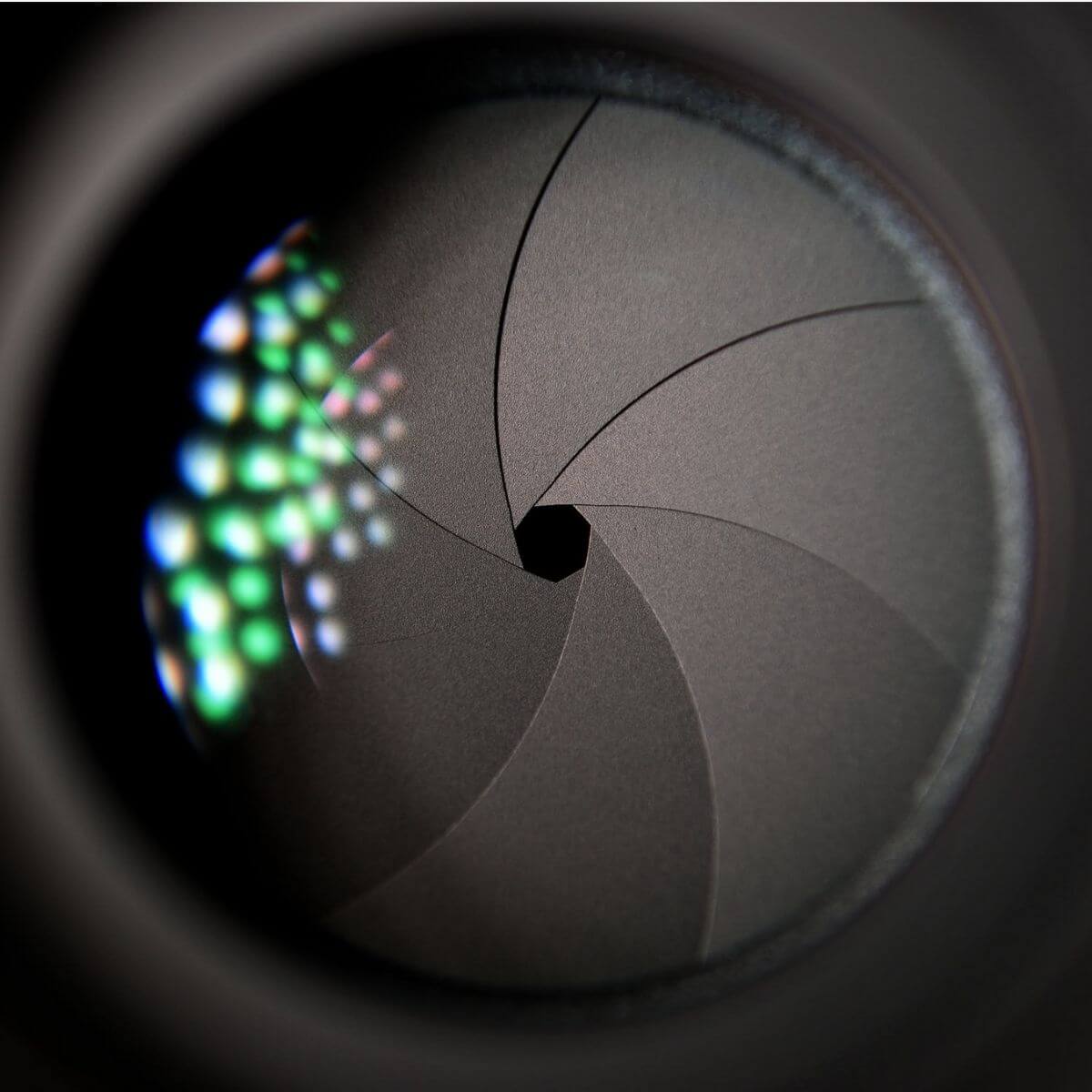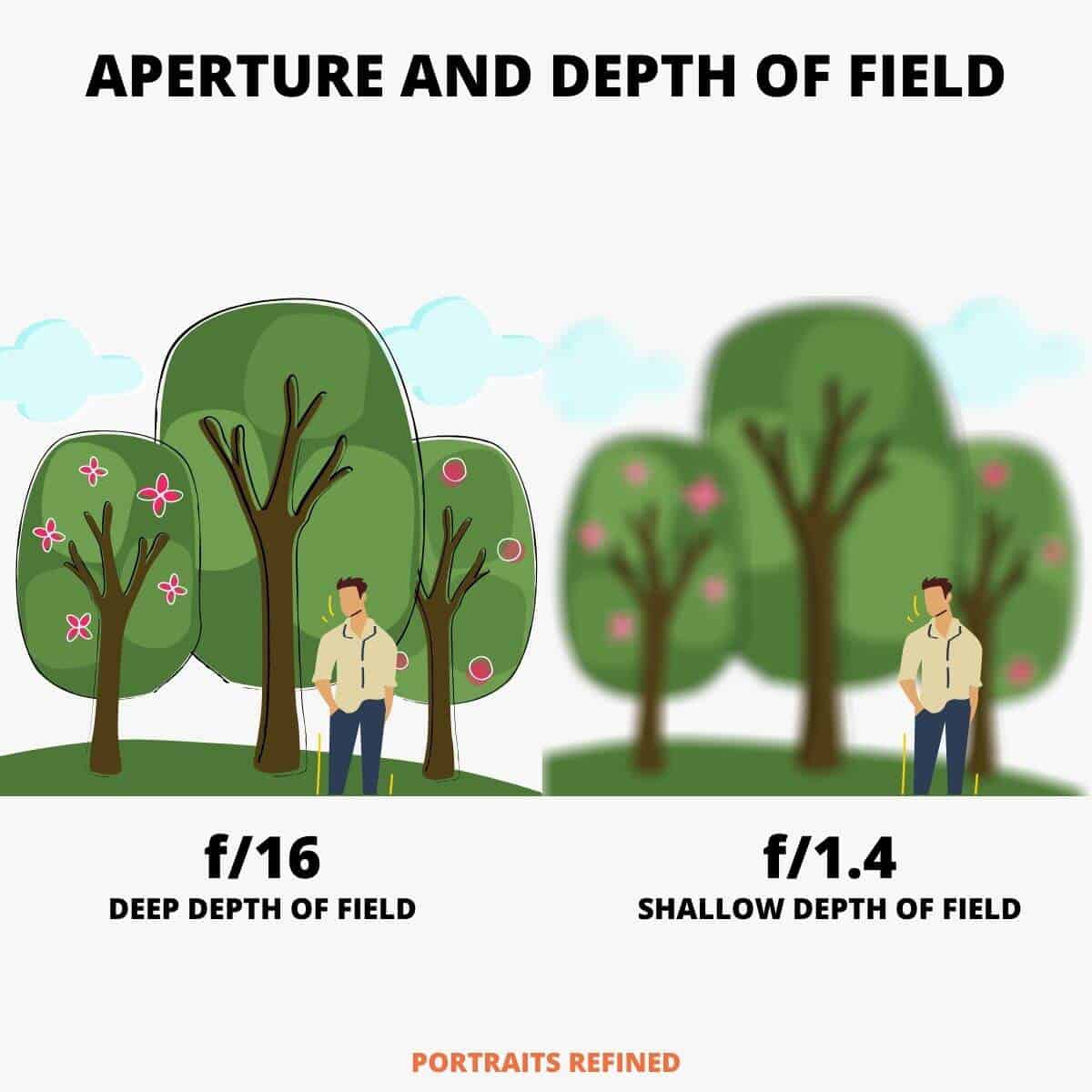Aperture is the opening in a lens, which light passes through to enter the camera. It’s communicated in f-stops, such as f/1.4, f/4, f/16, and so on.

What is aperture?
Aperture is the opening in a camera lens. The size of the hole is adjustable and is also known as the diaphragm of your lens. However, there are a few lenses that have fixed apertures.
Related: What is white balance in photography?
Like the pupil in your eye, the aperture opens larger or smaller to control the amount of light that passes through. The larger the hole, the more light that gets in. The smaller the hole, the less light.
Aperture affects more than just light. It also affects how much of the image is in focus, and other settings such as shutter speed.
A solid understanding of aperture is important because you’ll be able to shoot in manual mode and know how to make an image look great in any situation.
How aperture affects exposure
Depending on the time of day, and how bright it is, you’ll use different apertures. When it comes to exposure, a large aperture allows plenty of light in, making the image brighter. Whereas a small aperture allows a small amount of light in, making the image darker.
With that in mind, using a large aperture in the middle of the day will cause the image to be very bright. Using a small aperture may result in perfect exposure.
There are times when you can use large apertures when it’s bright. To make this work, you’ll need to use faster shutter speeds to balance the exposure.
In dark environments such as indoors or at night, using a large aperture is helpful because you’re allowing the largest amount of light possible to enter the camera.
F-stops
The f-stop is also known as an f-number. When you change the f-stop, it’ll either double or halve. Meaning, the size of the opening in your lens will double or halve in size.
It’s important to note that changing your shutter speed has the same effect. Therefore, when you increase your aperture, you’ll need to decrease your shutter speed to allow the same amount of light into the camera.
With f-stops, smaller numbers mean larger apertures, thus more light. Larger numbers mean smaller apertures, resulting in less light.
The following are examples of different f-stops:
- f/1.4
- f/1.8
- f/2.8
- f/4
- f/8
- f/11
- f/16
- f/32
Remember, the smaller the number, the larger the opening. The larger the number, the smaller the opening.
How aperture affects depth of field
Another critical aspect of aperture is depth of field. With exposure aside, depth of field determines how much of the image is in focus. It changes how shallow or deep the image looks.
Often, portraits are taken with a shallow depth of field because the main focus is your subject. To blur out the background and focus on your subject, use a large aperture.
If you’re taking a photo where the background plays an important role, you’ll want to make sure it’s in focus. To do that, use a smaller aperture because it’ll capture the entire image.
The following is an example of how changing the aperture will affect what’s in focus:

Large apertures such as f/1.2, f/1.8, and f/2.8 allow the most light into your camera. They also create a shallow depth of field, which means a blurry background or foreground.
Small apertures such as f/11, f/16, and f/32 let very little light into the camera. This creates a deep depth of field, with the majority of the photo in focus.
Aperture priority
Aperture priority mode is a semi-automatic camera setting which allows you to control the aperture, while the camera balances the exposure. Using this setting is helpful because all you have to worry about is the aperture. Your camera will do the rest.
If you aren’t happy with how your camera selects the exposure, you can press the plus or minus button to increase or decrease your desired brightness.
To use aperture priority mode, look at your camera dial, and find the abbreviation A or Av. Then turn the dial so that it’s selected, and you’ll be ready to use aperture priority.
Frequently asked questions
When would I use a large aperture?
Photography is a personal preference. That said, large apertures are used in low light, to blur out the background in portraits, capture foreground blur in landscapes, and shoot the night skies.
When would I use a small aperture?
Small apertures work best for landscapes, and whenever you want most of the image in focus. In portraits, it’s common to use small apertures when the background plays an important role in expressing your subject.
What’s the best aperture to use for sharpness?
For the sharpest image, use an aperture of f/5.6 or smaller.
What are sun stars and how do I take a photo of one?
The key to taking great photos of sun stars is to use a small aperture such as f/16 or f/22. It’s also easier to do by looking at the live view instead of the viewfinder due to brightness.
Conclusion
When you understand how aperture works, you can alter the look of an image. Whether you’re looking to capture a crisp photo or blur out a background or foreground, you can shoot the photo you envisioned.
More resources:
Featured photo courtesy of Pexels.
